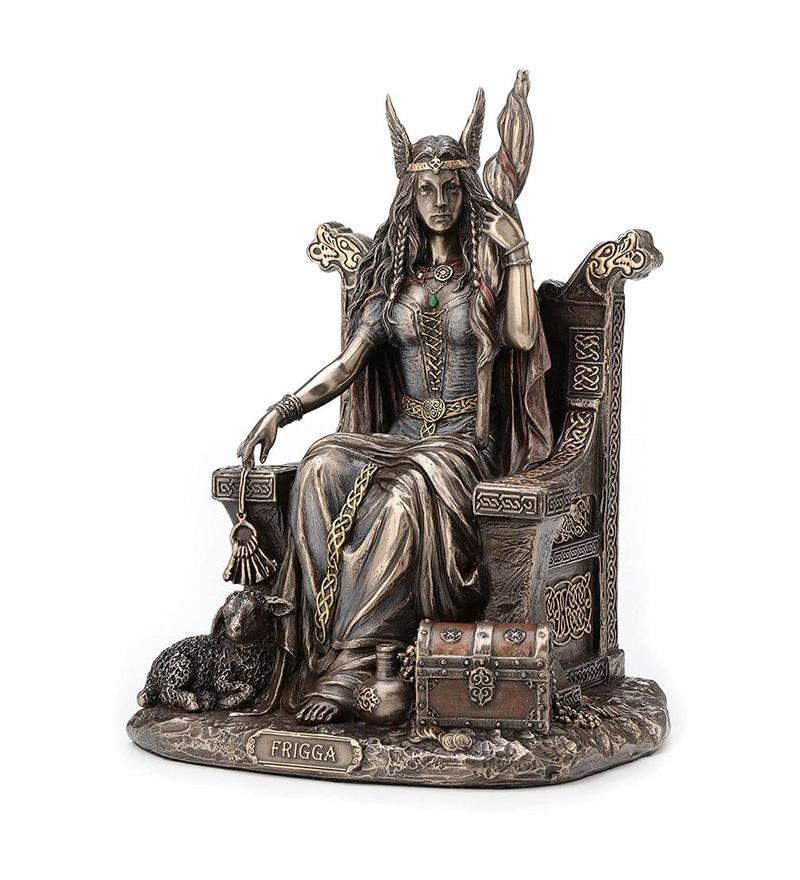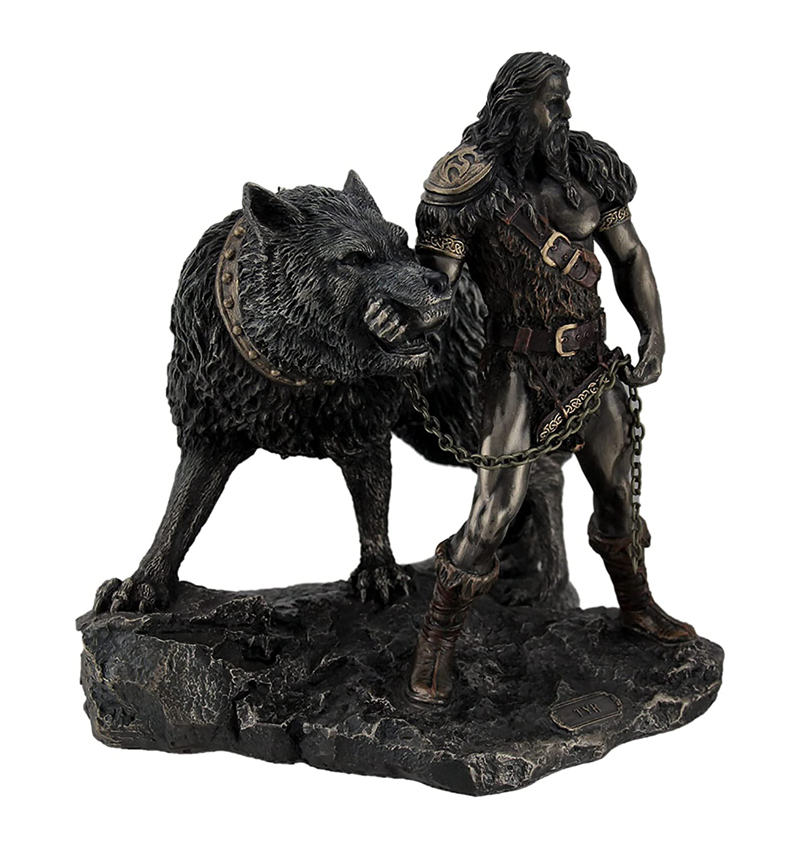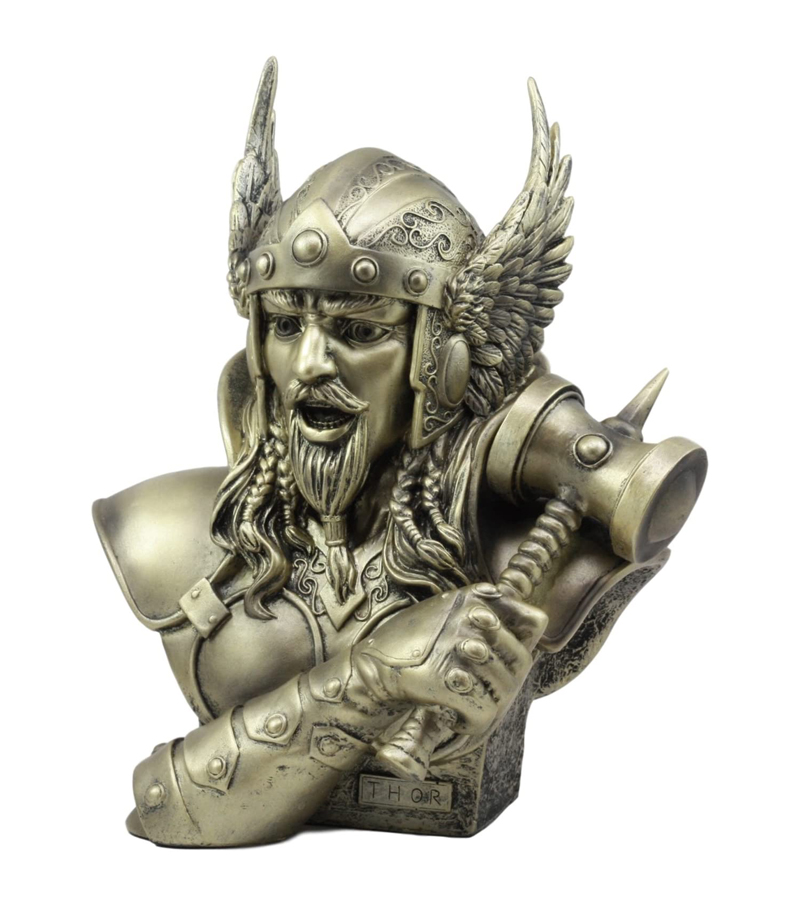Viking Goddess of Love Frigga Statue
Viking Goddess Frigga Statue, creatively crafted in cold cast bronze in intricately sculpted detail. Mixing bronze powder with resin gives it an authentic metal look with a stunning antique bronze finish detailed with a touch of blue coloring on her dress. Frigga is the wife of Odin, weaver of clouds for sunshine, rain and fertility of crops as well as the destiny of man and gods alike, she sits on a throne rich with celtic symbols. Known by many names, including Frigg, Frija, Frea and Frige, the Viking Goddess Frigga is the wife of Odin and rules over the destiny not only of man, but also of the gods. She is shown seated on a throne rich with Celtic symbols holding a set of keys and a spindle with which she weaves that destiny, as well as manipulates the weather for fertility of crops. At her feet is a lamb, box and various treasures. A great gift for anyone interested in Viking Mythology, in medieval history, or simply for a strong woman ruling over her household. Frigga or Frigg is one of the most relevant deities in Norse mythology, celestial wife of Odin, she is also called “lady of the sky” or “lady of the gods“, a title worthy of the companion of the most important of the Asi, and is said to be the most “Wise among the Goddesses“.
Frigga is the goddess of marriage and motherhood. In Norse mythology, Frigg appears primarily as a wife and mother and she is said to have the power of clairvoyance, and she can see things that escape even her husband Odin, while never revealing them. She shares Hliðskjálf‘s seat with Odin, and she can, from there, see the whole Universe. She has a beautiful home in Fensalir, one of the regions of Ásgarðr. The terms for Friday in the Germanic languages derive from the name Frigg, for example the English Friday and the German Freitag. Frigg’s sons, all with Odin, are Baldr, Hermóðr and Hoðr, and her stepchildren are Pórr, Víðarr, Váli, and Skjoldr. She often accompanies Eir, a goddess with medical skills, and her handmaids Hlín, Gná, and Fulla. The origin and etymology of the term Frigg can be found in many Nordic cultures, both in the Scandinàve ones as in the Old Norse (genitive Friggjar) or in the Swedish word fria “candidate for marriage” or in the Icelandic frjá “to love“, either in the Old Saxon Fri “lady“, or in the English Frig, or in the Germanic Frijo. Furthermore, Frigg is a word related to Sanskrit, in which the definition priyatil appears, which means “wife“. Viking Goddess of Love Frigga Statue sizes: 5.5 inches / 14 cm x 5 inches / 13 cm x 7.25 inches / 18.5 cm.
Viking Goddess Frigga Statue on Amazon.
Viking Goddess Frigga Statue on eBay.
Celtic Statues, Vikings Statues, Gods Statues and Mythological Statues.







You must be logged in to post a comment.